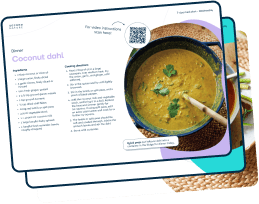At Second Nature, we know that there’s far more to improving our health than simply losing weight. In fact, there are countless ways to measure improvements to our health beyond weight loss, from our energy levels, to how we sleep, to our mindset and relationship with food. Some of the most tangible results, however, can be seen with blood tests.
There are lots of blood testing providers that have huge lists of tests to choose from, but we believe a lot of the blood tests are unnecessary, or not worth the money.
At Second Nature, we like to focus on the science, but also make sure we’re doing the right thing. Doing extensive testing is not only expensive but can be confusing.
Rather than giving you a long list of new blood tests to take, we’re only putting the Second Nature seal of approval behind two tests: HbA1c and Triglycerides: HDL ratio.
Medication-assisted weight loss with a future focus
Start with Wegovy or Mounjaro, transition to habit-based health with our support


What actually is HbA1c?
Haemoglobin A1c (HbA1c) is a blood test that measures your average blood sugar or glucose levels over the previous 8-12 weeks.
It works by measuring the proportion of red blood cells in our bloodstream that are glycated. Glycated red blood cells are ones that have glucose, or sugar, attached to them.
As red blood cells travel around our body, glucose sticks to them and cannot unstick, so the cells stay glycated for their whole lifecycle which is between 8 and 12 weeks.
If we have higher than usual levels of glucose in our blood, then there’s more available to stick to our red blood cells. In this case, we have a higher proportion of glycated red blood cells than expected and our HbA1c results are higher.
HbA1c is an important test in measuring our health because high blood sugar levels are strongly associated with conditions like type 2 diabetes and cardiovascular disease.
Therefore, we believe that the HbA1c test is the single blood test that provides the best overall picture of your health.
What is the HbA1c blood test?
HbA1c levels are measured through a small blood sample, either via a fingerprick test that can be done yourself or by a blood sample taken from your veins by a healthcare professional. Your sample will then be sent off for lab tests and analysis.
For people with an existing diagnosis of diabetes, having regular HbA1c tests is an important part of diabetes management and helps to assess their risk of developing diabetes complications.
For others, testing offers insight into your health and your risk of developing chronic medical conditions.
What’s a healthy HbA1c test range?
Lower blood sugar levels are generally associated with better health. Therefore, the lower your HbA1c result is, the better.
An HbA1c level of 42-47 mmol/mol is generally considered at risk for developing type 2 diabetes, sometimes called prediabetes.
Test results above 48mmol/mol are typically considered the threshold for type 2 diabetes, but further investigation by a healthcare professional is required for diagnosis.
For people with diabetes, your healthcare professional will help you find a suitable target that balances the risk of developing diabetes complications with the risk of low blood sugar known as hypoglycaemia.
What is the Triglycerides: HDL ratio test?
This test measures the ratio of triglycerides (TG) to High-Density Lipoprotein (HDL) in your blood. Triglycerides are a major form of fat that’s stored in our bodies. HDL is a molecule that transports things like fat and cholesterol around our bodies.
The TG: HDL ratio is strongly associated with our long-term risk of heart disease and can give you an additional perspective on how well the metabolic processes in our body are functioning. In other words, how well your body is managing and storing energy.
Having a high TG: HDL ratio is an indication that the body is struggling to regulate fat effectively. This places you at a higher risk of chronic disease.
Research also suggests that the ratio of TG: HDL can predict insulin resistance (a potential indicator of type 2 diabetes) at an earlier stage than changes to your blood sugar levels, which can remain in a normal range despite insulin resistance developing in the background.
So, in summary, it’s another test that offers insight into the health of our whole bodies and our risk of developing chronic diseases.
What’s a healthy Triglycerides: HDL ratio?
The more TG that you have in your blood relative to HDL, the higher the ratio. For example, if you have twice as much TG in your blood compared to HDL, then your TG: HDL ratio would be 2.
The exact ratio that’s linked to chronic disease varies across studies. Some studies suggest that a TG: HDL ratio above 4 was a strong predictor of heart disease. Another found that a ratio above 2.27 suggests a higher risk of insulin resistance.
However, in a similar sense to the HbA1c test, generally the lower your TG: HDL score, the better.
How to improve your HbA1c or TG: HDL ratio?
The first step to making improvements is finding out your starting point. Knowing your HbA1c and ratio of TG: HDL can be useful in deciding whether you need to make changes to your lifestyle to reduce your risk of chronic disease.
That’s why we’re now offering blood testing kits that you can order today and complete at home. We’ve packaged these into two separate options:
1) Basic Metabolic Profile – £29
– Includes the HbA1c test
2) Advanced Metabolic Profile – £59
– Includes both the HbA1c and TG: HDL ratio tests
To purchase your blood testing kit, visit our shop here.
Once you’ve taken the tests, we’ll be on hand to help you interpret and understand the results. However, we’re unable to provide specific medical advice or diagnosis.
The Second Nature programme has been designed to help you make healthy lifestyle changes that can lower your HbA1c and TG: HDL ratio using a lower-carb approach. Our easy-to-follow programme was the first digital programme used by the NHS for long-term behavioural change & sustainable weight loss.
If you decide to make healthy lifestyle changes to improve your health, we suggest repeating your advanced metabolic profile test in 3 months time to monitor their impact.


